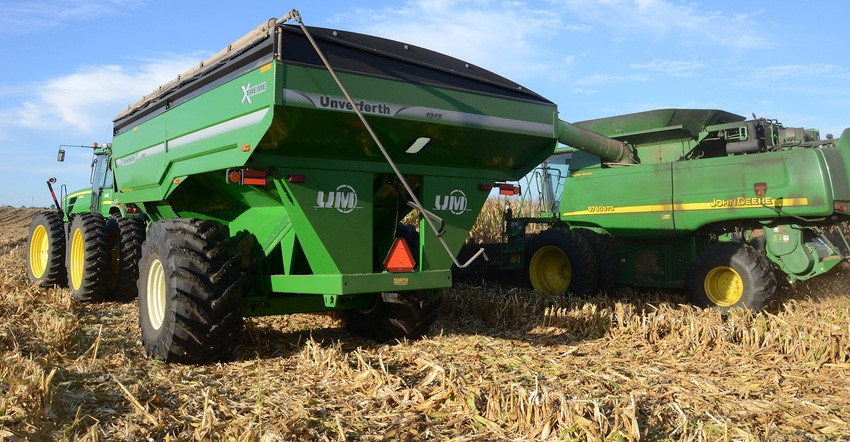September 22, 2020

The decision to rent ground in the current environment is complicated by the landowner’s reluctance to accept sizable reductions in rental payments. If a farmer expects to lose money, should he or she continue to rent the tract? How much premium should a farmer pay to hold on to a tract until net return prospects improve? How does holding on to a tract impact liquidity?
To consider these questions is to use option thinking. Specifically, use it to determine how much premium over breakeven the farm can pay for rented ground and still maintain an adequate level of liquidity.
Let’s look at two scenarios related to option thinking for a west-central Indiana case farm.
First, we use Food and Agricultural Policy Research Institute price projections to examine the impact of holding cash rent constant from 2021 to 2025 on working capital and cash rent premium. The premium is the difference between market rent and breakeven rent.
Second, we hold cash rents constant and use relatively low price projections of $3.40 per bushel for corn and $8.70 per bushel for soybeans. The second scenario is a worst-case scenario.
Both scenarios start out with a relatively strong liquidity position, at $500 of working capital per acre, and assume that the acres in question represent 25% of total acres in the farm operation. It’s important to note that swings in liquidity accelerate as the acreage for the rented farm we’re considering keeping or letting go increases.
Option thinking examples
Current FAPRI price projections plus adjustments for the difference between U.S. and Indiana crop prices were used for the first scenario. Specifically, we used $3.60 for corn in 2021 and $3.65 for corn prices from 2022 to 2025, and $9.15 for soybean prices from 2021 to 2025. Under this scenario, working capital per acre declined from $500 per acre in 2020 to $406 per acre in 2025, or 19%.
The rent premium, or amount over breakeven rent, averaged about $75 per acre. This means that if a farmer finds the decline in liquidity acceptable, he or she could afford to pay $75 per acre over the breakeven rent to retain the farm we’re considering.
Under the worst-case scenario, corn and soybean prices were assumed to be $3.40 and $8.70 per bushel, respectively. In this case, working capital per acre declined from $500 per acre in 2020 to $361 per acre in 2025, a 28% drop.
The cash rent premium for this scenario averaged $111 per acre for the farm we’re considering. Remember, it’s 25% of this operation’s total acreage. Again, you would need to decide whether this drop in liquidity is manageable.
This article discusses an approach that can be used when making long-run rental decisions. Even though a farmer may be losing money, in some situations, it makes sense to pay a premium over breakeven cash rent. The size of this premium depends on how large of a drop in liquidity a farmer is comfortable with, as well as projected crop prices.
The website for the Center for Commercial Agriculture includes a long-run cash rent spreadsheet that can be used to examine breakeven prices, cash rent premiums and trends in liquidity.
Langemeier is a Purdue University Extension agricultural economist and associate director of the Purdue Center for Commercial Agriculture.
About the Author(s)
You May Also Like






